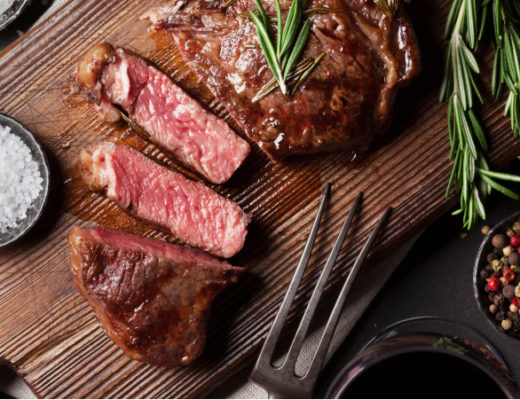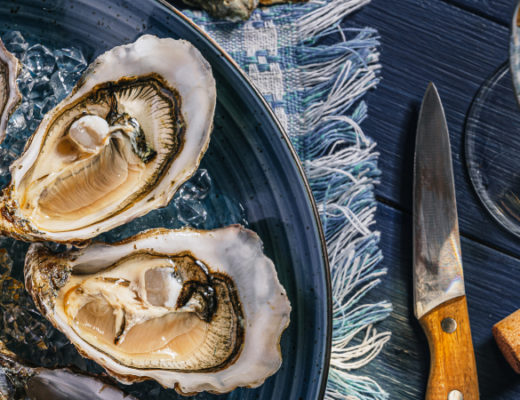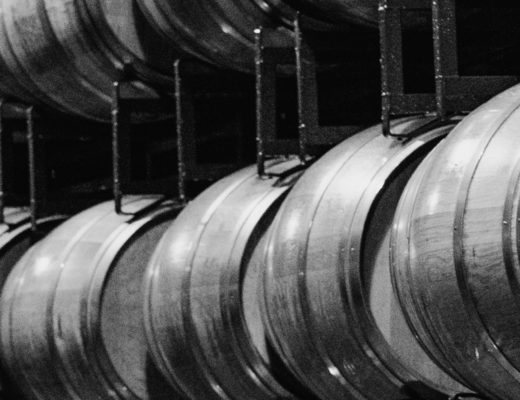Master Sommelier Sur Lucero commands any room he enters, and that includes the dining room. After more than two decades in the restaurant profession, completing culinary school, and earning the prestigious title of Master Sommelier, Sur has dedicated his life to advancing the understanding of wine and food across the country and around the world.
After all these years at the forefront of the field, Sur has come up with an easy-to-remember system for pairing wine and food with delicious precision, no matter what you’re in the mood for.
The key is focusing on the five main tastes (the aspects of food and wine that evoke a chemical reaction on the tongue itself): Bitterness, Acidity, Umami, Saltiness, and Sweetness, or BAUSS for short. Fat is also a key here, which we’ll discuss later on.
Sweet & Sour
Sweetness: It’s All About Finding Harmony
Matching the level of sweetness in both the food and the wine is far more important than pairing any of the specific flavors (cherries, herbs, etc.) in each of them. For example, a cherry-forward Pinot Noir may not pair all that well with a seared duck breast with cherry sauce because the sauce is likely to be a whole lot sweeter than the wine.
Sugar in food will negate your perception of ripe, generous fruit in wine, often making it taste sour or unbalanced. You also have to watch out for hidden sweetness in food: Ketchup, barbecue sauce, even fruits often bring unexpected sweet notes to a dish…and to a wine pairing. As a result, when it comes to sweetness your best bet is to focus on matching the prominence of sweetness in the wine to any in the food, like the obviousness of honey in a sauce, or more subtle hints like deeply caramelized onions, for example.
Acidity: The Natural Palate Cleanser
Just like vinegar works well in cleaning a dirty countertop, acidity in wine does the same to your tongue. It’s a natural palate cleanser, stripping away fat and protein from the last bite of food.
Think of a bowl of fettuccine alfredo without a squeeze of lemon on top, or without a crisp glass of white wine alongside it. Not pleasant, is it? That’s because both examples lack acidity, which contrasts fat. Essentially, acidity in wine helps lead to the perception of “cutting through” fat in food, and works to negate the perception of bitterness as well. In practical terms, this means that high-fat foods can be cut down to size with an equally acid-forward, mouthwatering wine, like blanc de blancs Champagne or a crisp, energetic Sauvignon Blanc.
Salty & Bitter
Saltiness: Minimizes Bitterness and Acidity
In addition to other miracles, saltiness suppresses our perception of bitterness. Take a bite of plain raw radicchio, and then a bite with some salt sprinkled on it and you’ll see what Sur means: Your perception of the bitterness with the salted bite will be far less intense. Interestingly, all of those bitter compounds are still present in the radicchio, it’s just that the salt causes the tongue to perceive the bitterness as less intense.
When it comes to pairing, you can often look to wine to bring greater balance to a salt-forward dish. Raw oysters, for example, are high in both savoriness and saltiness, but lack acidity. A fairly neutral, crisp (i.e., acid-forward) white wine like Chablis will bring that brightness to the mollusc, almost as if you’re squeezing a bit of lemon over it. The Chablis will also temper the oysters’ saltiness.
Saltiness works the other way around, too: Salty buttered popcorn pairs well with brightly acidic Champagne, for example, because the salt makes the bubbly feel richer, softening the perception of acidity. Just be careful—too much saltiness can make your wine taste flat and lacking in energy.
Bitterness: The Search for Balance
Wine can often come off as a bit bitter. Fans of tannic reds and highly oaked whites (tannins from the wood find their way into the wine, too) tend to love bitterness. But like the old cliché goes, too much of a good thing is a bad thing: Wines that are too bitter can seem astringent and off-putting.
Because of that, it’s important to make sure that wine and food pairings harmonize bitterness with the other tastes, rather than allow it to dominate. In order to minimize your perception of bitterness in wine you can always pair foods with prominent saltiness, fat, or acidity, which will tamp down your perception of bitter tannins in the wine. Young Napa Cabernet Sauvignon can be delicious, but the youthful tannins often play such a big role that the other notes don’t really have a chance to shine. Taking a sip of that wine after a bite of hamburger, however, will allow a greater range of the wine’s nuances to shine through.
Fat & Umami
Fat: The Ultimate Buffer
No matter how highly tannic your wine might be—think of a young Nebbiolo, or a huge Amarone—consuming fatty food will actually buffer and protect your tongue, and in the process soften the perception of tannin in the wine.
In general, the best wines to enjoy alongside rich or fatty foods are ones that will serve as a contrast. For example, a youthful Barolo will be a beautiful counterpart to pasta in a rich bolognese sauce; a young, tannic Cabernet will find a delicious counterpart in a fatty, rich braised short rib. Both of these pairings will soften the wines, and the wines will balance the richness in the food.
Umami: Savoring the Savoriness
When it comes to pairing wines with deeply savory dishes—in other words, ones with a lot of umami, like well-aged beef, sun-dried tomatoes, mushrooms, and more—it’s important to take a measured approach. While it may be tempting to open up a bottle of assertive red wine alongside that 50-day dry-aged steak, the tannins and acid will actually make the meat taste metallic. The reason for this is that the steak, after having been dry-aged for so long, will have developed a great deal of additional Glutamic acid, the compound in tomatoes, mushrooms, and, yes, dry-aged steak that lends them their deeply savory character. And that will wreak havoc with the pairing.
Just like with so many other tastes, umami responds best to contrasting wine. In this case, it’s better to pair a more mature red, one whose tannins have softened to the point where they’ll no longer do battle with the umami in the steak. Or, if you’re feeling crazy and really want to break the so-called rules, pair a big, rich California Chardonnay: You can magnify the umami of the beef without having to worry about any metallic issues on the tongue since the wine isn’t dominated by tannin. The Chardonnay, in fact, will act like a generous pat of butter on each bite.
In general, the best wines to enhance umami in food are ones that will cut through the perceived richness without bringing too much acid or tannin to the pairing: Lush whites and fully mature reds are safe bets here.
Once you wrap your arms around the five BAUSS tastes, pairing like a pro is easy. And the best part is the practice: More wine and food, with a built-in excuse to have lots of both. Research!





